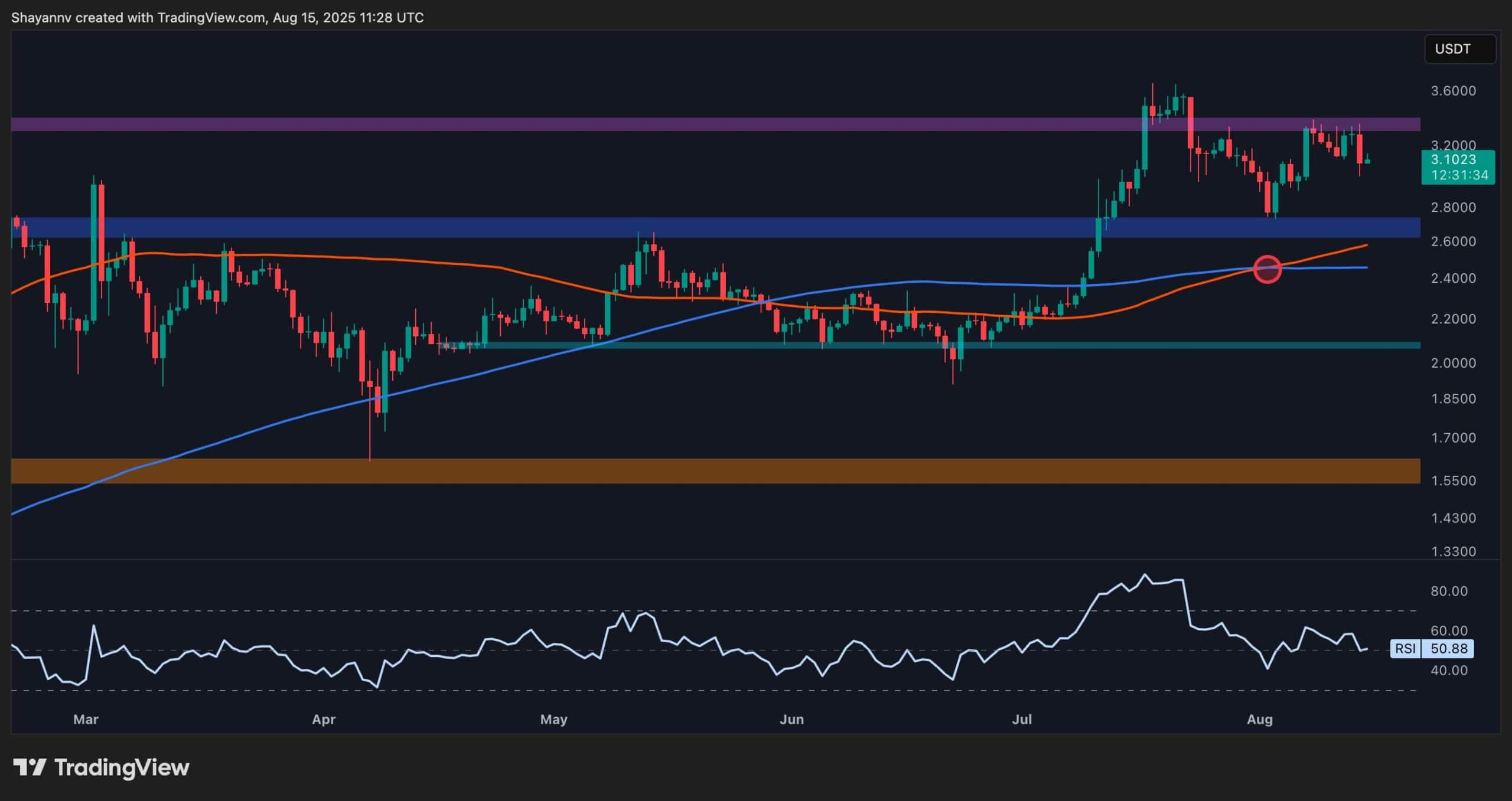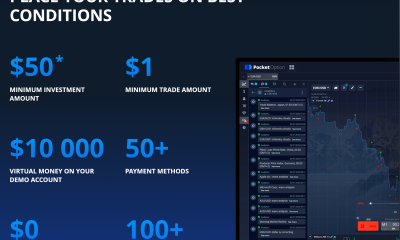Cryptocurrency
Enterprise blockchain: ‘Ethereum for Business’ explains key use cases

The cryptocurrency market has encountered its share of ups and downs over the past year, but blockchain technology continues to see impressive growth as businesses seek digital transformation.
Recent findings from the market research platform, MarketsandMarkets, estimated the global blockchain market size to be $7.4 billion in 2022. While notable, the report indicates that the blockchain sector is expected to generate $94 billion in revenue by the end of 2027. If these findings are accurate, this will result in a compound annual growth rate of 66% from 2022 to 2027.
Breaking down ‘Ethereum for Business’
Specifically speaking, many enterprises today are using the Ethereum blockchain to improve outdated business processes. Paul Brody, global blockchain leader for Ernst & Young (EY), told Cointelegraph that he believes the Ethereum network will drive the most growth for the enterprise blockchain market going forward.
To bring this to light, Brody recently published Ethereum for Business. According to Brody, this book intends to help non-technical, C-level executives and company leaders understand how and why Ethereum applies to specific use cases.

To ease readers into the subject matter, Brody begins part one of the book by explaining how Ethereum works using relatable language. “There are three foundational concepts that are useful to understand — the distributed ledger, the programmable ledger, and consensus algorithm,” he writes. Brody then explains that every “financial system has a ledger,” but notes that the difference between centralized, traditional systems and Ethereum is that “Ethereum’s ledger is public and distributed to all participants.”
The first chapter also explains the terminology associated with blockchain networks. Brody writes that “batches of transactions are known as ‘blocks.’” He ends the chapter by mentioning that the Ethereum network is often attractive to business users because it offers the “convenience of an integrated digital business” without a centralized market operator.
Before going in-depth on specific use cases, Brody spends the next few chapters of the book detailing terminology like wallets, tokens and smart contracts. For instance, in chapter four, he writes:
“In Ethereum, both the money and the stuff can be represented as tokens, while the terms of the exchange between two parties can be captured in a smart contract.”
Brody adds that everything of value is stored in a wallet when using the Ethereum blockchain: “Wallets are just a name for a digital account where you can store your keys and the access rights to contacts and assets you control through those keys.”
Recent: AI in healthcare: New tech in diagnosis and patient care
Chapter five focuses on oracles; as Brody mentions, “enterprise transactions will require extensive use of oracles” since external data sources will be essential for completing smart contracts for business purposes.
The information presented at the beginning of Brody’s book is extremely useful for readers that may be new to the blockchain sector. The following chapters focus on concepts like privacy, which is a crucial consideration for enterprises leveraging blockchain.
In chapter six, Brody writes, “Though enterprises require privacy, blockchains do not, by default, offer privacy.” Given this, Brody focuses this section on privacy applications that can be applied to support enterprise transactions. Although Brody mentions at the beginning of the book that the read is not meant to promote EY’s blockchain work, he does detail how Nightfall and Starlight — two privacy mechanisms created by EY — are used by businesses to ensure private blockchain transactions.
Real-world enterprise Ethereum use cases
Part two of Brody’s book focuses on use cases and case studies. This section is probably the most interesting because it explains why the technology could be helpful for business processes.
Tokenization is heavily discussed in section two, with Brody writing that it is “the single most important thing enterprises can do in the blockchain space.” He adds that tokenization is often the first decision that firms using blockchain make since this can be used to digitize assets that can be easily tracked and managed.
Although Brody explains the difference between ERC-20 and ERC-721 tokens, he emphasizes that the ERC-1155 standard is gaining traction among enterprises due to its blend of fungible and nonfungible properties. Brody shares that an EY client in the pharmaceutical industry is currently using ERC-1155 tokens to track serialized medicine packages. “Using the 1155 standard, this firm can mint large volumes of tokens and transfer them in big batches to distributors and others,” he writes.
Brody continues sharing real-world examples of how EY clients apply the Ethereum blockchain. For instance, he explains how Italian beer producer Peroni uses blockchain for traceability, allowing consumers to scan a QR code to understand how the beer was produced.
“Those looking at a beer non-fungible token (NFT) from Peroni on the Polygon PoS chain (an Ethereum side chain), will be able to see Peroni’s final batch token as well as input tokens from the malt house and farms,” writes Brody.
In addition to these use cases, Brody details how blockchain helps with supply chain management, contract management, carbon emission tracking, payments and more. He emphasizes in this section that “Blockchains will do for business ecosystems what ERP [enterprise resource planning] did inside the single enterprise.”
‘Ethereum for Business’ is educational, but blockchain is broad
While Ethereum for Business provides an in-depth and clear view of enterprise Ethereum, readers should remember that the blockchain ecosystem is broad. There are a number of different blockchain networks that businesses can use aside from Ethereum.
Recent: Bug bounties can help secure blockchain networks, but have mixed results
Yet it’s notable that Brody’s new book gives an in-depth overview of the Ethereum ecosystem, breaking down key concepts while providing real-world use cases. This is extremely important, as education around blockchain technology is still needed to drive mainstream adoption.
Cryptocurrency
Ethereum Foundation, Whales, and Hackers: What’s Driving the ETH Sell-Off?

TL;DR
- Whales, hackers, and the Ethereum Foundation wallets moved over $500M in ETH through large sales and withdrawals.
- Ethereum transfers rose to 4.6M ETH, nearing the monthly high of 5.2M recorded in July.
- Staking inflows hit 247,900 ETH, the highest in a month, locking more supply from trading.
Large Withdrawals and Whale Activity
Ethereum (ETH) has seen heavy movement from major wallets over the past few days. On-chain data from Lookonchain shows a newly created wallet pulled 17,591 ETH, worth $81.62 million, from Kraken in just two hours.
Over three days, two new wallets withdrew a combined 71,025 ETH, valued at $330 million, from the exchange.
One of these wallets, address 0x2A92, has withdrawn 53,434 ETH, worth $242.34 million, in two days. This includes a recent purchase of 30,069 ETH, valued at $138.46 million, during a market drop.
Major ETH Holders Offload Millions Amid Price Rally
In contrast, several separate entities have been disposing of some ETH holdings. A wallet tied to a hacker address 0x17E0 sold 4,958 ETH for $22.13 million at $4,463, securing a profit of $9.75 million. Earlier this year, the same address sold 12,282 ETH at $1,932 and later bought back part of the amount at higher prices.
A different whale sold 20,600 ETH for $96.55 million over the past two days, generating a profit of more than $26 million after holding the position for nine months.
Meanwhile, an Ethereum Foundation-linked wallet, 0xF39d, sold 6,194 ETH worth $28.36 million in the last three days at an average price of $4,578.
Recent sales from the same wallet included an additional 1,100 ETH and 1,695 ETH for over $12.7 million combined.
The #EthereumFoundation-linked wallet(0xF39d) sold another 1,300 $ETH($5.87M) at $4,518 ~11 hours ago.
Over the past 3 days, this wallet has sold a total of 6,194 $ETH($28.36M) at an average price of $4,578.https://t.co/4hfCWymHVG pic.twitter.com/ErUyEY8SJy
— Lookonchain (@lookonchain) August 15, 2025
Network Activity on the Rise
CryptoQuant data shows Ethereum’s total tokens transferred have been climbing since August 9. After ranging between 1 million and 3 million ETH through late July and early August, transfers have risen to 4.6 million ETH, approaching the monthly high of 5.2 million recorded in mid-July. This increase has occurred alongside a price rally from about $3,400 to $4,600.
Interestingly, staking inflows generally stayed between 20,000 and 80,000 ETH per day over the past month. On August 14, inflows jumped to 247,900 ETH, the highest in the period.
At the time, ETH was trading near $4,600. Large staking deposits reduce the amount of ETH available for immediate trading, as staked coins are locked for a set period.
In the meantime, ETH trades at $4,647 with a 24-hour volume of $68.25 billion, down 2% on the day but up 19% over the week.
Binance Free $600 (CryptoPotato Exclusive): Use this link to register a new account and receive $600 exclusive welcome offer on Binance (full details).
LIMITED OFFER for CryptoPotato readers at Bybit: Use this link to register and open a $500 FREE position on any coin!
Cryptocurrency
Massive DOGE Whale Activity Hints at $1 Breakout

TL;DR
- Whales bought two billion DOGE this week, lifting their combined holdings to 27.6 billion coins.
- A single 900M DOGE transfer worth $208M to Binance drew attention to large exchange movements.
- DOGE broke key resistance, with momentum building for a possible push toward the $1 price mark.
Price and Market Moves
Dogecoin (DOGE) traded at $0.23 at press time, slipping 4% over the past day but still showing a 2% gain for the week. Daily turnover came in at about $6.18 billion.
Meanwhile, the broader crypto market saw over $1 billion in liquidations. Hotter-than-expected US Producer Price Index data pushed traders to scale back expectations of a near-term Federal Reserve rate cut. DOGE had roughly 290,500 coins liquidated during the sell-off.
On the two-week chart, analyst Trader Tardigrade notes that DOGE has cleared a downward-sloping resistance line after completing what appears to be a “wave V” in an Elliott Wave sequence. Similar setups in the past, where prolonged declines stayed within falling channels before breaking higher, have been followed by sharp rallies.
$Doge/2-week#Dogecoin is gaining strong momentum to surge above $1 pic.twitter.com/TuSEKr19nv
— Trader Tardigrade (@TATrader_Alan) August 15, 2025
Momentum gauges are also turning up. The Stochastic RSI, which had dropped into oversold territory, is now heading higher. Previous reversals from this zone have coincided with sustained upward moves. The current formation points to a possible run that could carry DOGE past the $1 mark.
Heavy Whale Buying and Large Transfers
As reported by CryptoPotato, blockchain data shows large investors have added two billion DOGE in the past week, spending just under $500 million. That brings their holdings to about 27.6 billion coins, or 18% of the supply. The buying streak has prompted speculation within the community.
Recently, Whale Alert flagged a 900 million DOGE transfer worth about $208 million into Binance. The tracking indicates that it originated from a wallet connected to the exchange, likely as an internal activity. The address involved holds 2.88 billion DOGE, one of the largest balances on the network.
Ali Martinez also reports that transactions above $1 million reached a one-month high, with activity building since early August and peaking as DOGE traded at $0.25.
Whales are back! Dogecoin $DOGE activity at a 1-month high. pic.twitter.com/C83Pv68mCt
— Ali (@ali_charts) August 14, 2025
Sentiment Building
Analyst Gordon described the current setup as “a nice bit of consolidation” before a potential breakout, adding,
“This will be one of the first coins normies FLOCK to & the pump will be MASSIVE.”
With whale accumulation rising, high-value transfers increasing, and a bullish technical pattern in play, DOGE is positioned for a potential push toward $1 if momentum holds.
Binance Free $600 (CryptoPotato Exclusive): Use this link to register a new account and receive $600 exclusive welcome offer on Binance (full details).
LIMITED OFFER for CryptoPotato readers at Bybit: Use this link to register and open a $500 FREE position on any coin!
Cryptocurrency
Ripple Price Analysis: XRP at Risk as Key Support Levels Could Trigger Sharp Drop

XRP has recently entered a consolidation phase after a strong rally earlier this summer, with the price action now hovering around key resistance levels on both its USDT and BTC pairs. Yet, while momentum has slowed, the charts still indicate a generally bullish structure, with multiple key support levels remaining firmly in place.
Technical Analysis
By ShayanMarkets
The USDT Pair
On the XRP/USDT daily chart, the price is currently trading near the $3.10 mark, facing a strong resistance zone around $3.40. This follows a breakout above the $2.70 range in July, which has now flipped into a support area.
Both the 100-day and 200-day moving averages are also trending upward and recently formed a bullish crossover around $2.45, reinforcing the medium-term bullish sentiment. If the $3.40 resistance breaks, a push toward the critical $4.00 range becomes likely.
However, the RSI hovering near the neutral 50 level suggests a lack of strong momentum for now, meaning a short-term pullback into the $2.80 support zone is still possible.
This zone will be key for maintaining the bullish structure. Losing it could open the door for a deeper correction toward the 200-day moving average located around the $2.40 mark. Yet, as long as the price stays above the moving averages, the broader trend remains bullish.
The BTC Pair
Looking at the XRP/BTC chart, the pair has recently pulled back after hitting the 3,000 SAT resistance, with the price currently around 2,600 SAT.
This follows a clean breakout above the long-term descending channel and a successful retest of its upper boundary, which coincided with the 200-day moving average and the 2,400 SAT support zone. This confluence remains a key bullish technical factor, as holding above it could attract renewed buying pressure.
That said, RSI levels around 48 show that momentum has cooled after the sharp July rally, meaning XRP may continue ranging between 2,400 SAT and 3,000 SAT in the near term. A decisive close above 3,000 SAT would likely open the path to the 3,400 SAT zone, while losing 2,400 SAT could shift the bias back toward 2,000 SAT support. For now, the structure still favors the bulls as long as higher lows remain intact.
Binance Free $600 (CryptoPotato Exclusive): Use this link to register a new account and receive $600 exclusive welcome offer on Binance (full details).
LIMITED OFFER for CryptoPotato readers at Bybit: Use this link to register and open a $500 FREE position on any coin!
Disclaimer: Information found on CryptoPotato is those of writers quoted. It does not represent the opinions of CryptoPotato on whether to buy, sell, or hold any investments. You are advised to conduct your own research before making any investment decisions. Use provided information at your own risk. See Disclaimer for more information.
Cryptocurrency charts by TradingView.

 Forex3 years ago
Forex3 years agoForex Today: the dollar is gaining strength amid gloomy sentiment at the start of the Fed’s week

 Forex3 years ago
Forex3 years agoUnbiased review of Pocket Option broker

 Forex3 years ago
Forex3 years agoDollar to pound sterling exchange rate today: Pound plummeted to its lowest since 1985

 Forex3 years ago
Forex3 years agoHow is the Australian dollar doing today?

 Cryptocurrency3 years ago
Cryptocurrency3 years agoWhat happened in the crypto market – current events today

 World3 years ago
World3 years agoWhy are modern video games an art form?

 Commodities3 years ago
Commodities3 years agoCopper continues to fall in price on expectations of lower demand in China

 Economy3 years ago
Economy3 years agoCrude oil tankers double in price due to EU anti-Russian sanctions





















